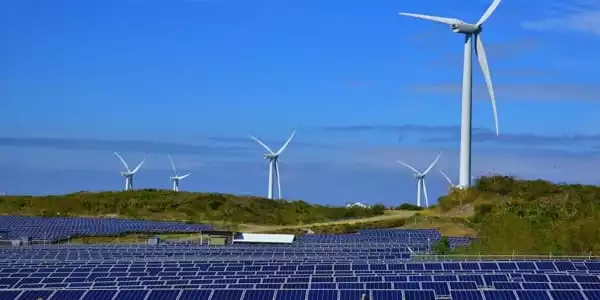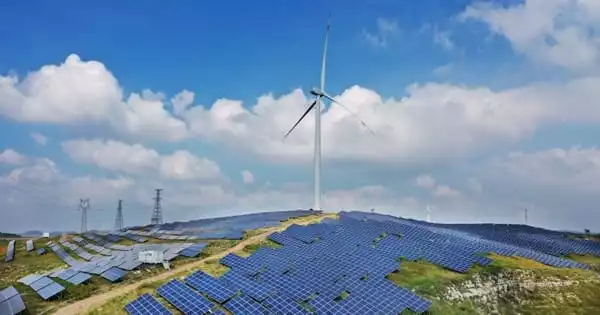Renewable energy production grows year after year. However, after analyzing wind and solar power growth rates in 60 countries, researchers conclude that virtually no country is moving fast enough to avoid global warming of 1.5°C or even 2°C. Aleh Cherp, Vadim Vinichenko, Jale Tosun, Joel A.Gordon, and Jessica Jewell wrote the article “National growth dynamics of wind and solar power compared to the growth required for global climate targets,” which was published in the journal Nature Energy.
Wind energy is a renewable source of energy. Overall, using wind to generate energy has fewer environmental consequences than many other energy sources. Wind turbines, with rare exceptions, do not emit pollutants into the air or water, and they do not require water for cooling. Wind turbines may also reduce the amount of electricity generated from fossil fuels, resulting in lower total air pollution and CO2 emissions.
Renewable energy production grows year after year. However, after analyzing the growth rates of wind and solar power in 60 countries, researchers from Chalmers University of Technology and Lund University in Sweden, as well as Central European University in Vienna, Austria, conclude that virtually no country is moving fast enough to avoid 1.5°C or even 2°C global warmings.
We devised a new method for measuring the slope of the S-curve, or the maximum growth rate at its steepest point, by employing mathematical models. It’s a completely new way of looking at the evolution of new technologies.
Jessica Jewell.
“This is the first time that the maximum growth rate in individual countries has been accurately measured, and it demonstrates the enormous scale of the challenge of replacing traditional energy sources with renewables, as well as the need to explore diverse technologies and scenarios,” Jessica Jewell, Associate Professor of Energy Transitions at the Chalmers University of Technology, says.
The Intergovernmental Panel on Climate Change (IPCC) has identified energy scenarios that are compatible with keeping global warming to 1.5°C or less than 2°C. The majority of these scenarios envision very rapid growth in renewable electricity: on average, about 1.4 percent of total global electricity supply per year for both wind and solar power, and more than 3% in more ambitious solar power scenarios. However, the researchers’ new findings show that such rapid growth has previously only been possible for a few countries.
Measuring and forecasting the growth of new technologies, such as renewable energy is difficult because it does not occur in a linear fashion. Instead, growth typically follows an S-curve, in which it first accelerates exponentially, then stabilizes to linear growth for a while, and finally slows as the market becomes saturated.
“We devised a new method for measuring the slope of the S-curve, or the maximum growth rate at its steepest point, by employing mathematical models. It’s a completely new way of looking at the evolution of new technologies” Jessica Jewell explains.

When the researchers examined the 60 largest countries, they discovered that the maximum growth rate for onshore wind power is on average 0.8 percent of total electricity supply per year, and 0.6 percent for solar – significantly lower than the IPCC scenarios. The wind has grown at a rate faster than 2% per year, while solar has grown at a rate of 1.5% per year in only a few countries, including Portugal, Ireland, and Chile.
“Faster growth is likely to be easier to achieve in smaller, more homogeneous countries rather than large, diverse systems,” Jessica Jewell says.
“So far, only Germany has been able to sustain onshore wind power growth comparable to median climate stabilization scenarios. To put it another way, in order to meet climate targets, the entire world should build wind power at the same rate that Germany has recently. There may be limits to how quickly wind and solar can be expanded, so we should thoroughly examine the feasibility of other climate solutions, particularly for fast-growing Asian economies like India and China “Professor of Environmental Sciences and Policy at Central European University and Lund University, Aleh Cherp, agrees.
Modern wind turbines can be very large machines that have a visual impact on the landscape. A few wind turbines have caught fire, and some have leaked lubricating fluids, but these occurrences are uncommon. Some people dislike the sound made by wind turbine blades as they turn in the wind. Some wind turbines and wind projects are responsible for the deaths of birds and bats. These deaths may contribute to population declines in species that are also impacted by other human-caused factors.





